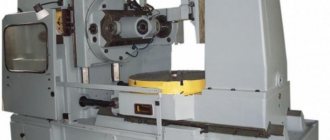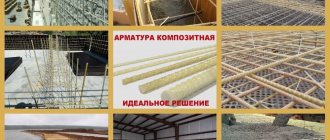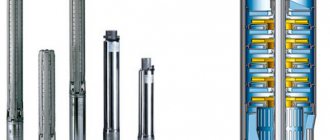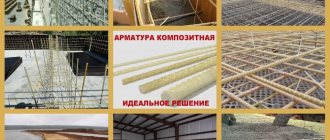Currently, there are a large number of different vacuum devices and elements. This prevalence is associated with a great demand from companies to use such equipment, which activates the process of production, testing and other manipulations with various families of substances. This spread has not spared the concept of pressing, which has a large number of modifications and methods of application.
Systems for the purpose of vacuum pressing combine a number of different vacuum elements that interact with each other throughout the entire process to achieve the required result. This facilitates a fairly long period of continuous operation, without loss of performance and properties of the finished products.
Pressing system with vacuum bag
This equipment is used in those cases where it is necessary to connect flat, curved, ribbed and other types of planes to each other. In a similar way, typesetting three-dimensional products are formed and adhesive objects are bent. The most famous types of manufacturing where these types of equipment are widely used are furniture production and woodworking factories. We are talking about veneering boards and manufacturing various types of bent wood products. Among the objects that are formed with the assistance of the concepts of vacuum pressing with a vacuum bag, we can identify:
- Wooden furniture, doors and facades with a curved surface, and objects with convex parts;
- Almost all types of musical instruments;
- Decorative elements of stairs of complex shape;
- Details of the interior and exterior of buildings;
- All types of triplex for ceilings, tables, chandeliers, windows, doors, vintage, etc.;
- Complex large-sized objects made of composite materials.
The most common uses for vacuum pressing systems are:
- Furniture manufacturing factories;
- Construction and restoration of ships;
- Construction and restoration of aircraft;
- Automotive industry;
- Interior and exterior design.
For illustrative purposes, below are the standard elements that are part of a vacuum pressing system:
- Vacuum pump;
- Vacuum bag;
- Connecting flange with vacuum hose;
- Set of filters;
- Sensors and vacuum gauges;
- Shut-off valve;
- Air inlet valve;
- Sealing clamp, for processed materials whose length is less than 1 m less than the size of the vacuum bag.
Sublimation Vacuum Press
The sublimation vacuum press belongs to the category of high-precision vacuum presses. Installations of this kind are used in narrow areas of industry, where the main task is not a large volume of production, but high accuracy and efficiency.
Sublimation Vacuum Press
Today, the sublimation vacuum press is widely used in scientific activities. With its help, scientists can conduct a number of useful studies that require efficient and high-quality equipment. The unit is equipped with thermal sensors, which serve to maintain the correct set temperature throughout the entire operating cycle of the equipment. If the sensor detects that the specified temperature limit has been exceeded, it transmits a signal to the automatic control panel, which turns off the equipment and issues a malfunction signal. There is a monitor on the body of the unit, which serves as a control element for the technological process. Loading of elements into this type of equipment is carried out horizontally or vertically.
It is worth noting the high price of the sublimation device, which is justified by the efficiency of the equipment and the needs of a specific production for this type of equipment.
Operating principle of the pressing system
The principle of operation involves the process of creating a vacuum environment around the parts to be glued, which allows you to remove all air bubbles and create a maximum density of pressing force on each other surfaces, for fixing them with an adhesive composition to each other. The stages of pressing are as follows:
- All parts of the product are coated with glue and connected to each other in the way they should be fixed in the end;
- Next, the workpiece is placed in a vacuum bag and its edge is sealed with a special clamp;
- A vacuum pump hose is connected to the underwater pipe, after which the process of pumping out the atmosphere from the working space of the bag begins;
- After pumping out all the air, a pressure is created on the product that can reach 10 tons per m2;
- The part remains in this position for a certain time, which is necessary for complete gluing of all parts, after which air can be let into the bag and the finished product can be removed.
In some types of production, to achieve certain goals, it is necessary to heat the workpiece to 100 degrees. In this case, special PU film bags are used that can withstand the required temperature.
Variety of temperature conditions
At enterprises that produce bent-adhesive objects, as well as the formation of certain types of plastic, certain temperature conditions are required, which for the most part exceed 150 degrees. To organize such a process, nylon or silicone vacuum bags are used, with a maximum temperature threshold of up to 250 degrees. Heating in such bags is carried out using infrared lamps, air is pumped out using vacuum fittings soldered into the bag material.
And if work with vacuum pressing is carried out cold, then you can use a cheaper bag material - polyurethane. This type of film stretches quite well, has reasonable strength and a low price.
Options for kits for connecting a vacuum pressing bag to a pump
To organize the connection of a vacuum pump to a bag, there is a special set of elements, which includes: a vacuum hose, connecting and shut-off valves, additional accessories for connecting and controlling the ongoing pressing process.
There are three main kits for standard connection:
- Complete kit for connecting a vacuum pump to a bag. It includes a vacuum hose with flanges on both sides, a vacuum gauge (mechanical), a shut-off valve, an air inlet valve, and a vacuum filter. The complete set is designed to connect only one vacuum bag to any type of vacuum pressing system.
- A complete set for connecting a vacuum unit with an equalizing cylinder to a vacuum bag. This also includes a vacuum hose, but neither a vacuum gauge nor a filter are connected to it, since these elements are already included in the vacuum unit. This kit can be assembled to connect two vacuum bags simultaneously. Its fasteners allow you to connect to any type of vacuum unit with an equalizing cylinder.
- Three-pin complex kit for synchronizing the vacuum unit with an equalizing cylinder and bag. The standard package contains three vacuum hoses with flanges, a connecting tee for connecting to a vacuum pump and a similar tee for connecting to vacuum bags. There is also no vacuum gauge and filter, since they are already included in the vacuum pressing unit. If necessary, it is possible to connect two such sets to obtain 6 simultaneously operating vacuum bags from one unit.
Special clamps for sealing vacuum bags
This device is a quick-release device that allows you to minimize the time you spend working with a vacuum bag. Structurally, the item is made in the form of a latch, which consists of two parts: a tube and a C-shaped rail, several micro inches wider than the tubular clamp. Such clamps are used for hermetically sealing bags, the wall thickness of which varies from 0.5 mm to 1 mm. The maximum width of the bag should not exceed 2 meters.
If the system involves a sufficiently powerful vacuum pump and the length of the product is at least 1 m shorter than the vacuum bag, then you can do without using a sealed clamp.
Design and types of vacuum presses
Equipment is a device that is necessary to give the processed materials the required shape to the processed material. The press is a device that is capable of performing several functions and is widely used in many areas of industry, where it characterizes itself only from the best side. Vacuum presses are most often used in furniture production, where they can perform a number of functions.
Design and types of vacuum presses
The equipment consists of the following structural elements:
- Frame where all components of the equipment are installed;
- A work area that combines several important pieces of equipment. The work table is an indispensable part of a vacuum press, without which the pressing process is not possible;
- a pneumatic system, which serves as the basis of the unit and is necessary to ensure vacuum in the working area;
- Carriage.
Each of these structural elements is indispensable in the operation of the unit as a whole. If one of them becomes unusable, it becomes impossible to carry out vacuum pressing. The main advantage of a vacuum press is the presence of an automation system, which not only simplifies the process of operating the equipment, but also makes it safe. Based on the operating principle, there are two types of vacuum presses:
- Auto. The entire production process of the equipment is automatic and requires minimal human participation;
- Semi-automatic. Here, with the help of human effort, the replacement of processed parts and their addition are carried out.
Capabilities of vacuum bag pressing concept
Pressing, depending on the product, can be carried out on a plane, on a desktop, or using spatial systems - guide trusses. A similar pressing model is used in the production of products such as components of spiral staircases, in the case of the production of the front wall of a bar counter. The trusses themselves are set according to the stencil and fixed directly to the floor.
Production of bent-glued furniture elements
The part is made from 2 sheets of elastic plywood, a layer of 5 millimeters. Finishing material - radial sheet “karri”, layer 0.7 millimeters. The raw material for the equipment is plywood, layer 12 millimeters. Super glue for plywood – KIILTO KESTOKOL D4000POLAR, super glue for veneer – KIILTO KESTOPRESS 3200V. The holding period under pressure at an ambient temperature of 20 degrees is 35-40 minutes.
Veneer covering of door panels
Panel material – MDF, layer 16 mm. The depth of the milling is 12 millimeters. The smallest radius on a figaree is 4 millimeters. Finishing raw materials – “FINE LINE” sheet, layer 0.6 millimeters. Superglue – HENKEL Dorus FU 4061. The exposure period under pressure at an ambient temperature of 20 degrees is 25-30 minutes.
Manufacturing of bent-glued furniture columns
The part is made from three sheets of elastic plywood, a layer of 5 millimeters. The raw materials for the equipment are MDF, layer 16 millimeters, briquetted cardboard, layer 12 millimeters. Superglue – KIILTO KESTOKOL D4000POLAR. The holding period under pressure at an ambient temperature of 20 degrees is 55-60 minutes.
Operating principle
The main area of application of vacuum presses is the furniture industry, where such equipment is used in the production of elements of cabinet and upholstered furniture - for gluing elements of furniture structures with PVC film and veneer, which perform primarily decorative functions. The tasks of the vacuum press in this case include depositing the film or veneer and ensuring their tight fit to the surface of the furniture structural element.
Vacuum pressing technology ensures fast and high-quality finishing of MDF
The principle by which a vacuum press works for veneering and covering furniture blanks with PVC film is quite simple. The heated film, which has become more plastic under the influence of the vacuum created under its surface, tightly fits the furniture piece, accurately repeating its configuration.
The film applied using vacuum technology to the surface of a piece of furniture made from MDF or chipboard lasts a very long time and does not contain even the smallest air bubbles.
The process of gluing a furniture element with PVC film using a vacuum press includes such technological operations as:
- laying furniture pieces on the equipment table;
- covering the workpieces with film and installing a pressure frame;
- sealing the vacuum chamber;
- heating the chamber and pumping air out of it;
- cooling of workpieces already covered with film;
- cutting the film along the contour of the blanks.











